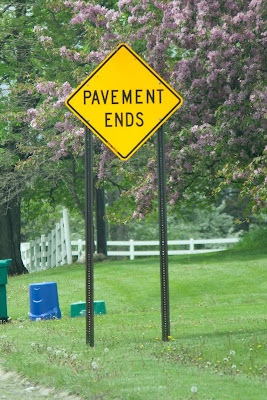As I was driving through the streets of Detroit and Michigan I kept thinking how the road signs are so different from the United Kingdom. So I decided to capture them.
'School Crossing' and 'No Parking'.

Side walk Ends

Speed Limit 40

Different directions

Speed Limit 25

Turnings at cross roads

The main roads and highways either run from South to North or East to West. This is to help you know which direction you are going. For example, people may explain where to find a particular location in this way: On the corner of John R and 12 Mile Road, South of 12 Mile (in this case John R runs North to South and 12 Mile runs East to West - all the mile roads run East to West and can have alternative names, for example 16 Mile road is also called Metro Parkway, Big Beaver and Quarton).

Awareness for Icy roads

Speed limit 45

There are deer in the tree and wood. In area more known from deer there are warnings because they could jump out infront of a moving car.
Give way sign
In Michigan especially with the bad weather during the winter the roads have so many pot holds and it a very bumpy drive because they don't have any road maintenance unlike in the UK so you can adopt a road which mean the street is named after you and you then have to look after the road and make sure if anything is needed to be repaired then the person who owns it has to pay. If they don't pay they can be sued unless they declare bank rupt.
Round about signs
Warning to give way ahead
In Michigan at certain traffic lights if the light is red during certain time you can turn if clear when the light is on red.
Instate Signs
Signs on the highway for speed limits
Signs for library
Signs for Michigan Uturns
Signal ahead
Sidewalk closed due to road works
Road work signs
Road work signs
Road work signs
Road work signs
Warning that the road bends slightly
Some area have these were the roads were quite bad and trucks arent aloud to go through they would have to go a different way
Pavement ends
We were travelling down an unsteady slippery road filled with shrubs and trees so the drives way were quite hidden
Signs warning the roads are narrow but compared to the UK they are the size of our standard roads.
Road turns
Follow the roads and 35 mph area.
Warnings to be careful when passing other vehicles
Intersection Hidden
Another sign warning people the road bends.


















































